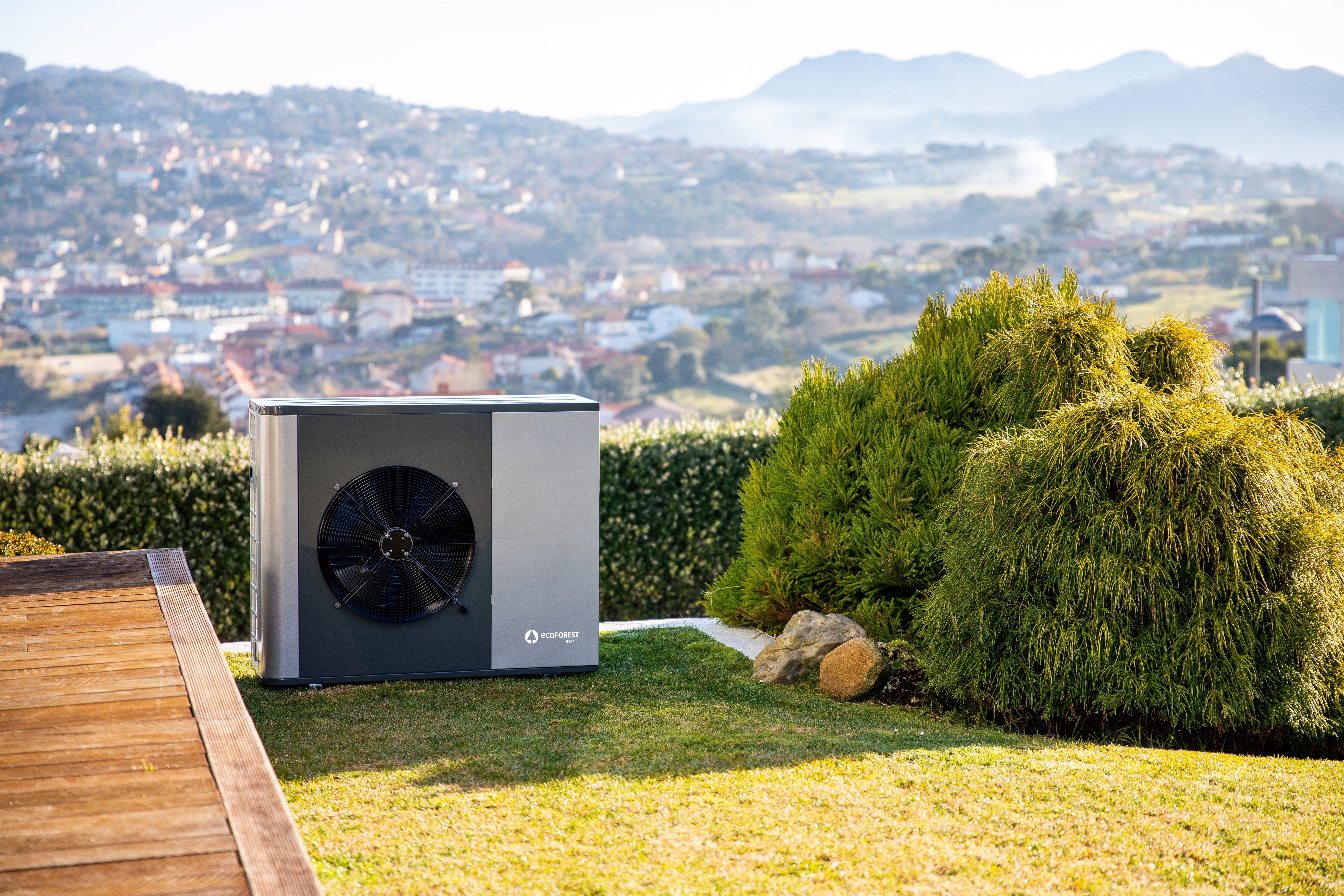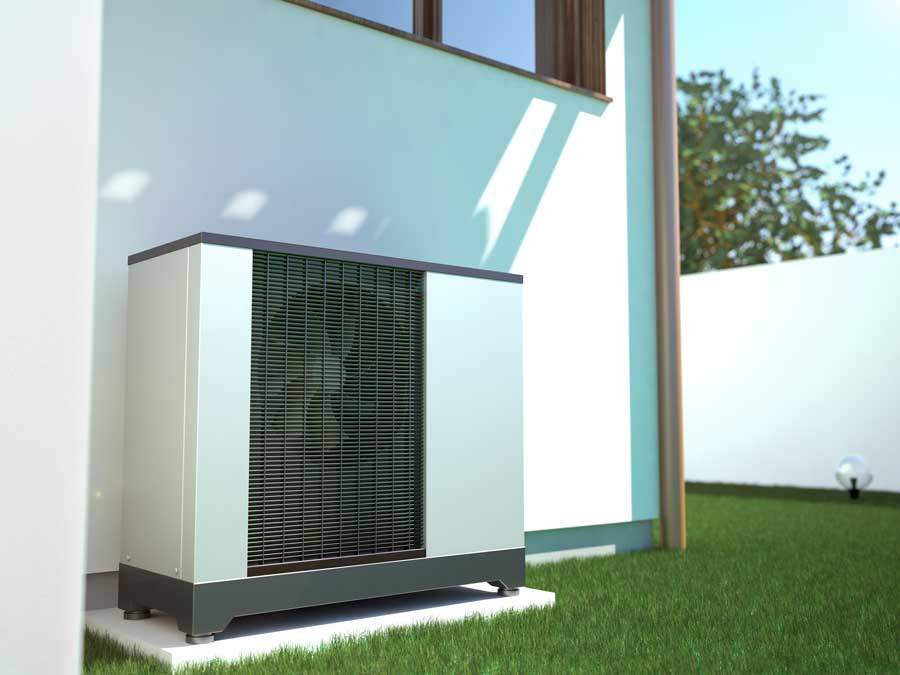
Air Source Heat Pumps (ASHP)
What is an Air Source Heat Pump?
An air source heat pump is a very practical, low carbon way to heat your home. They work in a similar way to ground source heat pumps, absorbing heat from the ambient outdoor air and using a unit based on the same principles of the vapour compression cycle to raise the temperature to heat your home.
They are low carbon because most home heating systems either burn fuel or convert electricity into heat, both of which cause the release of a lot of CO2. Heat pumps work differently. Most of the energy they generate comes from moving existing solar energy from outside your house into your home. They do require some amount of electrical energy to do this, but they deliver several times more heat energy than the electrical they consume. For this reason a heat-pump system typically costs less to run than a traditional heating system too, and makes a very significant and important reduction in your emissions, which will increase as the electrical grid is increasingly decarbonised.
How does an air source heat pump work?

An Air Source Heat Pump, also known as an Air to Water Heat Pump, works in the same way as a GSHP except that it takes the heat from the outside air instead of the ground. This might sound strange in the winter months, but given that the refrigerant in a heat pump boils at around -20 °C, even the coldest weather feels hot to a heat pump!
Some ASHP’s in particular are designed for radiator based heating systems and can be used together with most electric boilers, oil-fired boilers or equivalent if it is required that they are connected together. Some systems (usually Swedish) will work to outdoor air temperatures of minus fifteen degrees centigrade. In the UK, because of its milder climate than Sweden, it is possible that no extra heat source will be required to supplement the heat pump. The heat pump includes an advanced system for optimising the control that connects and disconnects the heat pump, any additional heat sources and controls the switching between room heating and hot water heating.
What are the benefits of an air source heat pump?

They will likely reduce your running cost and carbon footprint compared to a boiler system. They require less upfront installation costs than a ground source heat pump and can be installed where there is not enough land area to install a ground source heat pump.
A good heat pump installation will use weather compensation to vary the temperature in your radiators depending on the outside temperature. This means your house will always be warm and is the most efficient way to run a heat pump. This is unlike a traditional boiler setup, where the boiler is constantly switching on and off, to attempt to regulate the temperature of the house, set at the thermostat. This will make the house feel more comfortable as it will not cool down overnight when normally boilers are turned off.
What are the pros and cons of an Air Source Heat Pump
- They benefit from a £5000 government grant
- They are relatively simple to install
- They require less upfront cost to install than a ground source heat pump
- Long life span
- Weather compensated
- Requires a fan unit outside. This will cause some noise
- Depending on the plumbing in your house you may need to replace or install a new hot water tank